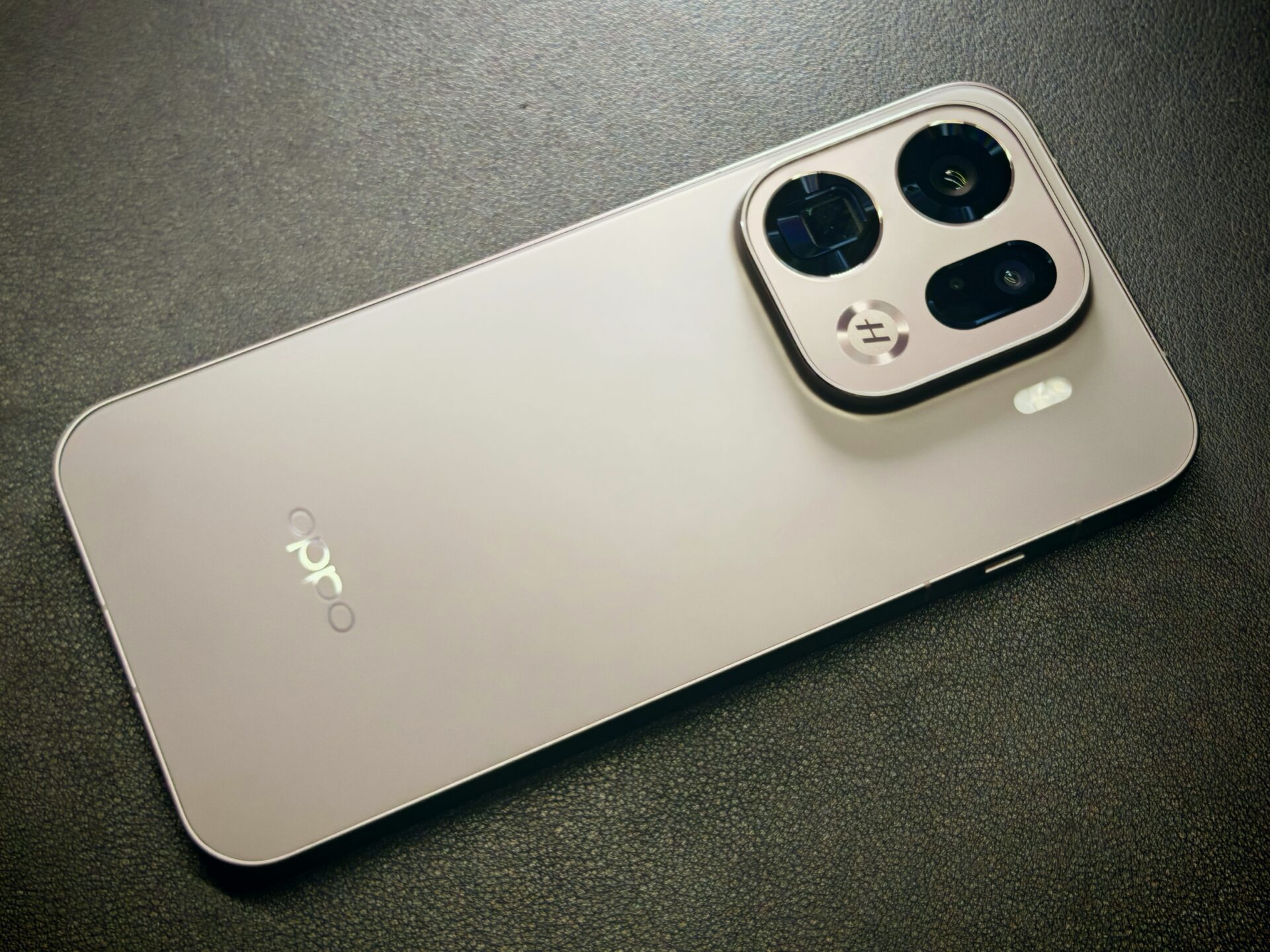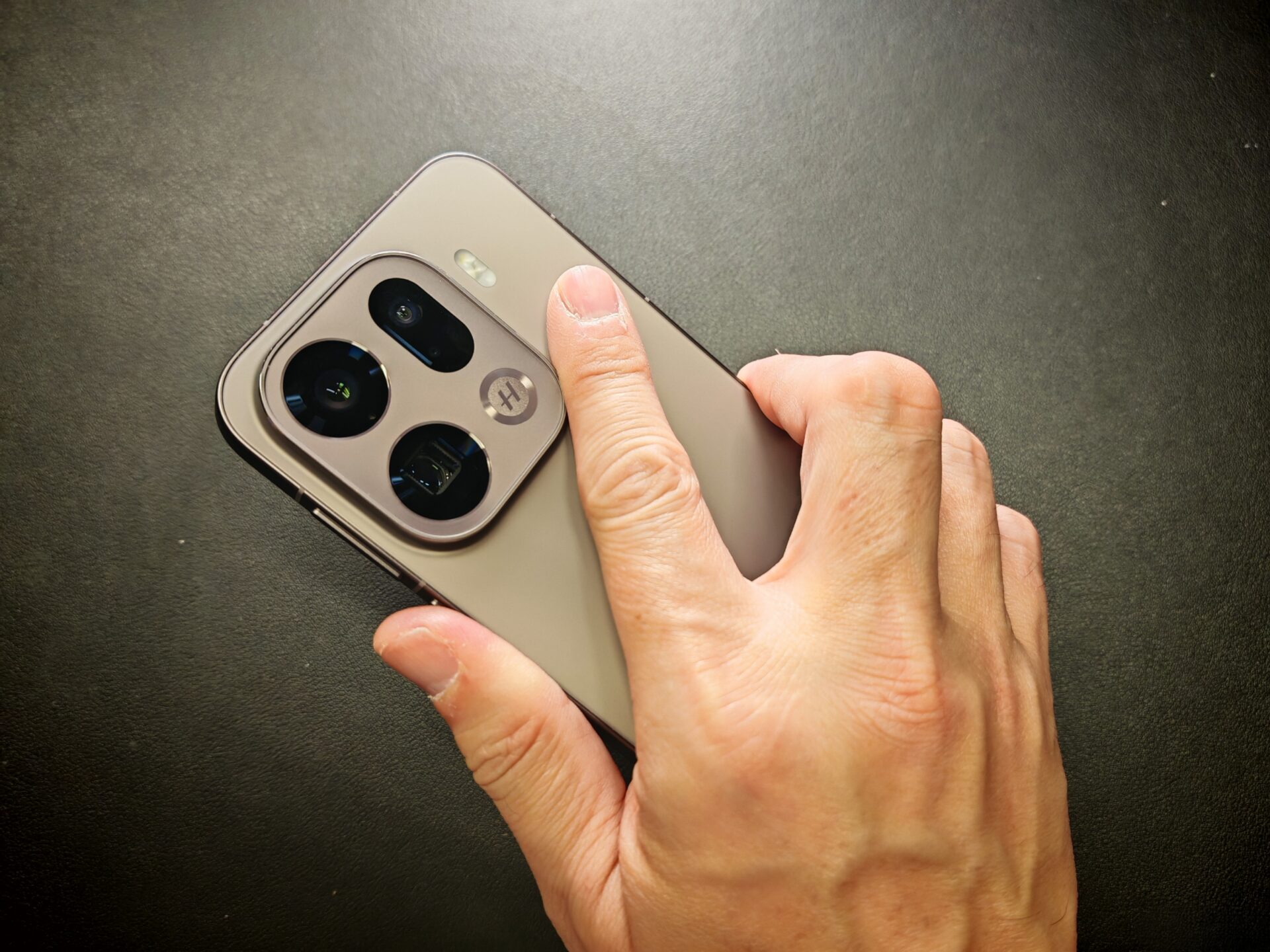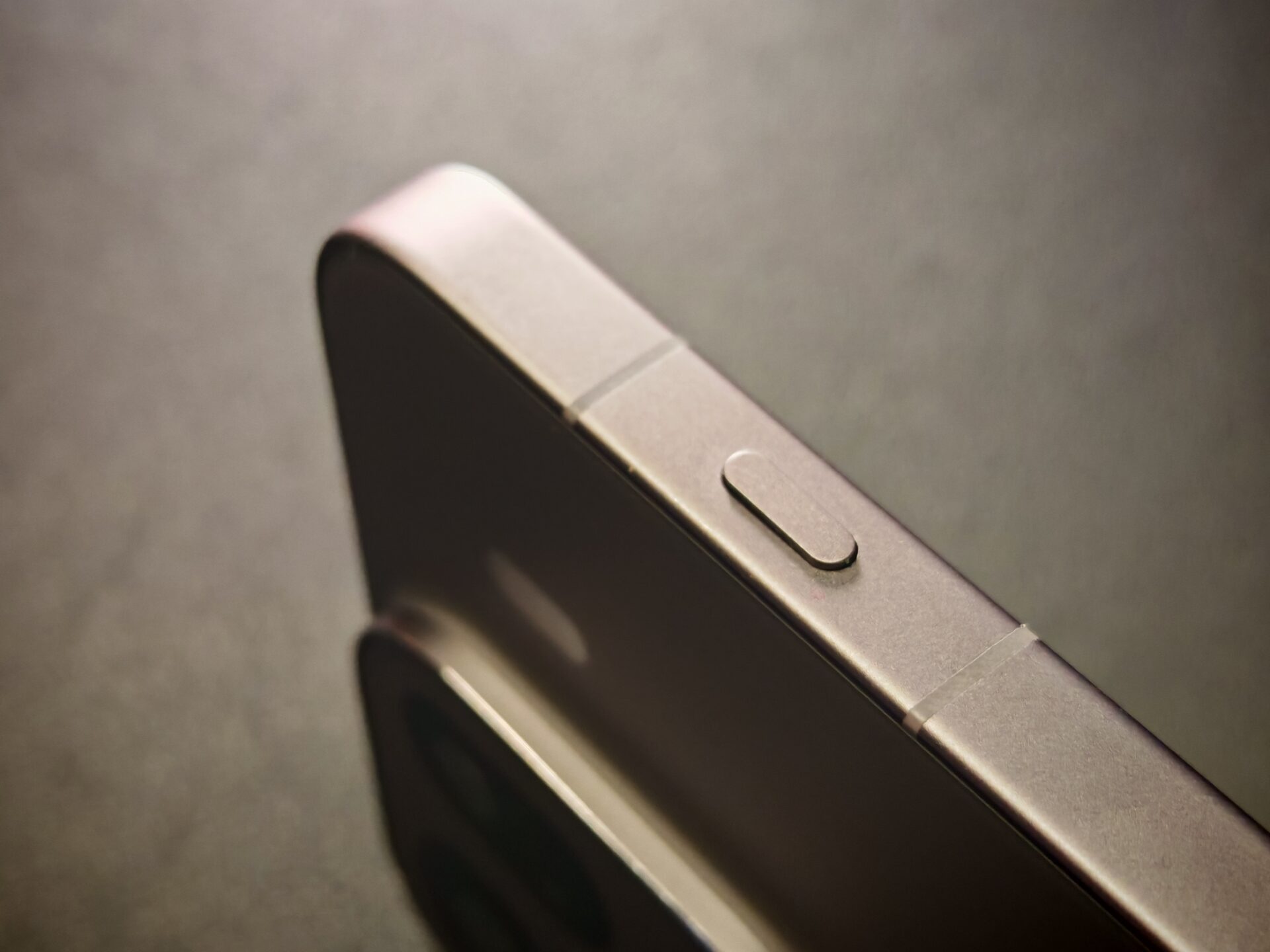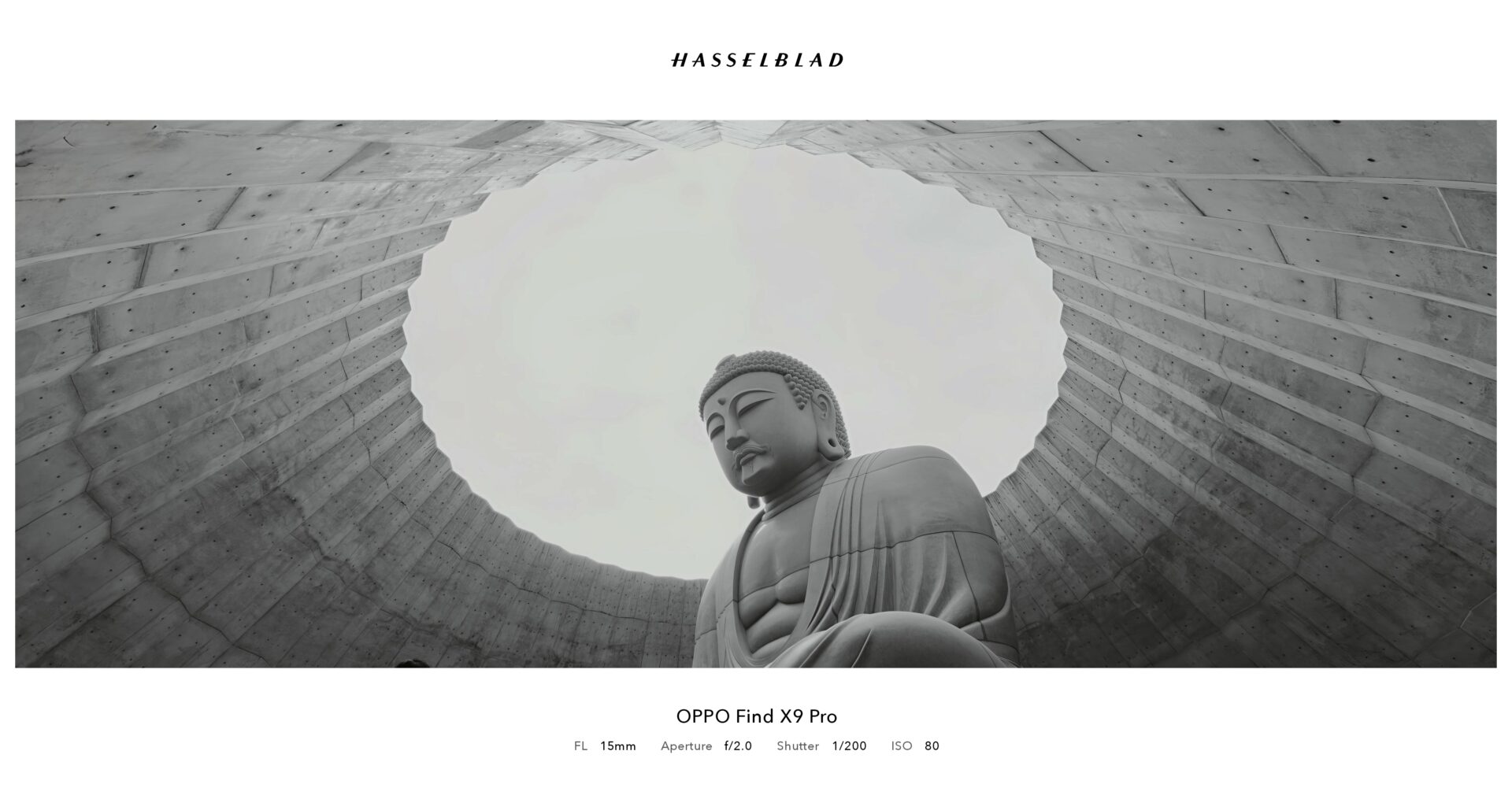Seeing the Oppo Find X9 Pro for the first time, you’re struck by the big steps that the Chinese phone maker has taken in trying to make this the flagship phone ot have as we approach the end of 2025.
From a fresh design to a truly exceptional camera, the new features should excite users who want an alternative to Apple and Samsung. It’s definitely worth checking out if you’re in the market for a top-end phone.
First, the design. Oppo has replaced the circular camera module with a squarish setup reminiscent of some current flagships. Combined with flat, squared-off sides instead of the previous generation’s tapered curves, the phone feels more solid and secure in the hand.
The phone’s robust build and premium materials quickly proved their worth for me. During an outdoor shoot recently, I had accidentally dropped it onto some rocks and feared the worst.
Fortunately, the Corning Gorilla Glass Victus display stayed intact, even though the screen protector took a beating. Lucky for me!
I have to say its IP66, IP68, and IP69 ratings for water and dust resistance mean it can be used confidently outdoors, especially if you’re using the phone as a phone while out on a hike. And more than being tough, the Oppo Find X9 Pro also feels as refined and durable as any top-tier flagship.

The 6.78-inch AMOLED display is another highlight, boasting an impressive 3600-nits peak brightness that provides clear visibility even in harsh sunlight. The 120Hz refresh rate makes sure things move along snappily on your screen.
Colours appear vibrant yet natural, with excellent contrast and wide viewing angles. The ultra-thin 1.15mm bezel gives the screen an expansive, edge-to-edge look that feels immersive and premium. While it’s not a full 2K display, the difference is barely noticeable in everyday use. Video playback and photo editing remain vivid and responsive.





A thoughtful addition is the Snap Key, which replaces the traditional alert slider on the left side of the phone. This programmable button lets you control volume, activate silent mode, turn on the flashlight, or open the camera instantly. Oppo has also retained the shutter button, which allows you to zoom in or out with a swipe and tap to capture a photo.
Under the hood, the Find X9 Pro is powered by the Dimensity 9500 chip, along with 16GB of memory and 512GB of storage. This engine delivers fast, fluid performance with no lag, even when handling demanding creative tasks such as editing RAW photos.
Running the phone through synthetic benchmarks, the Dimensity chip achieved an impressive 13,993 score in 3DMark’s Wild Life Stress Test, with an average framerate of 42.13 frames per second. Games shouldn’t lag during intense online battles. Notably, the score improves on the 11,554 on the Find X8 Pro last year.
The Oppo Find X9 Pro also scored strongly in Geekbench 6 – 2,952 for single-core and 8,705 for multi-core — outperforming the Samsung Galaxy S24 Ultra’s Snapdragon 8 Gen 3, which managed 2,136 and 8,705, respectively. The only minor downside is that the phone warms up slightly during prolonged RAW photo editing, though the heat is well within manageable limits.
The efficient processor also helps the 7500mAh silicon-carbon battery last a full day of heavy use. Fast charging with the 80W charger or a compact GaN alternative provides a full charge in just over an hour. For added convenience, the phone supports 50W wireless charging – just note that you’ll need Oppo’s official wireless charger to get the fastest speeds.




Photography remains Oppo’s standout strength. The Find X9 Pro features a 50-megapixel main camera with a 1/1.28-inch sensor, a 50-megapixel ultrawide lens, and a 200-megapixel periscope telephoto camera with a 1/1.56-inch sensor.
A fourth True Colour camera with nine spectral channels ensures accurate colour reproduction for any scene. The high-resolution zoom sensor captures crisp details, allowing you to crop in with minimal quality loss.
AI enhancements sharpen and refine images, though the AI struggles with distant human subjects, performing best with landscapes, architecture, or wildlife. It is best to keep the zoom at most to 10x to keep the details intact.
For video recording, the new Oppo phone shoots at up to 4K at 120fps, producing smooth slow-motion footage with improved colour accuracy and stabilisation. It also supports LOG recording in BT.2020 10-bit colour space for advanced post-processing.
Oppo’s ongoing collaboration with Hasselblad adds a professional touch, offering creative modes like Hasselblad Hi-Res for detailed shots, X-Pan for cinematic panoramas, and Long Exposure for artistic light trails or silky waterfalls.









Portraits exhibit noticeable improvements, featuring more accurate skin tones that are less warm than before, sharper edge detection, and a natural-looking background blur. For users who want complete control, Master Mode allows manual adjustments and saves images in the new RAW-MAX format, which captures extra computational data for greater flexibility during post-processing.
One feature that initially got me excited but didn’t quite live up to expectations is the Hasselblad Hi-Res mode. It lets you capture images at the full sensor resolution of each camera, and while the shots look impressively crisp on a phone screen, fine details are lacking upon closer inspection. That said, the files are large enough to print up to A2 size and to be fair, they will still look great at that scale.
Apple users who want a photography-focused smartphone but often find file transfers cumbersome will appreciate Oppo’s O+ Connect app. It enables seamless, high-speed transfers of photos and videos to iPhones or iPads. While Apple users do need to download the app, it is still a far more convenient option than e-mailing files or using third-party services like Dropbox, which require logins and extra steps.
The only thing missing at launch is the optional photography kit, which includes a specially designed case that can mount a 3.28x optical teleconverter, effectively turning the zoom camera into a 10x (230mm) lens. When available later, this accessory will elevate the Find X9 Pro’s photography, making it easier to capture distant wildlife or compressed landscapes without the bulky equipment.
All said, the Oppo Find X9 Pro is a well-rounded flagship focused on practical refinement and everyday usability. It combines a solid design, powerful performance, long battery life, and a versatile camera system that’s fun and professional. Well worth the S$1,599 that Oppo is asking for.






